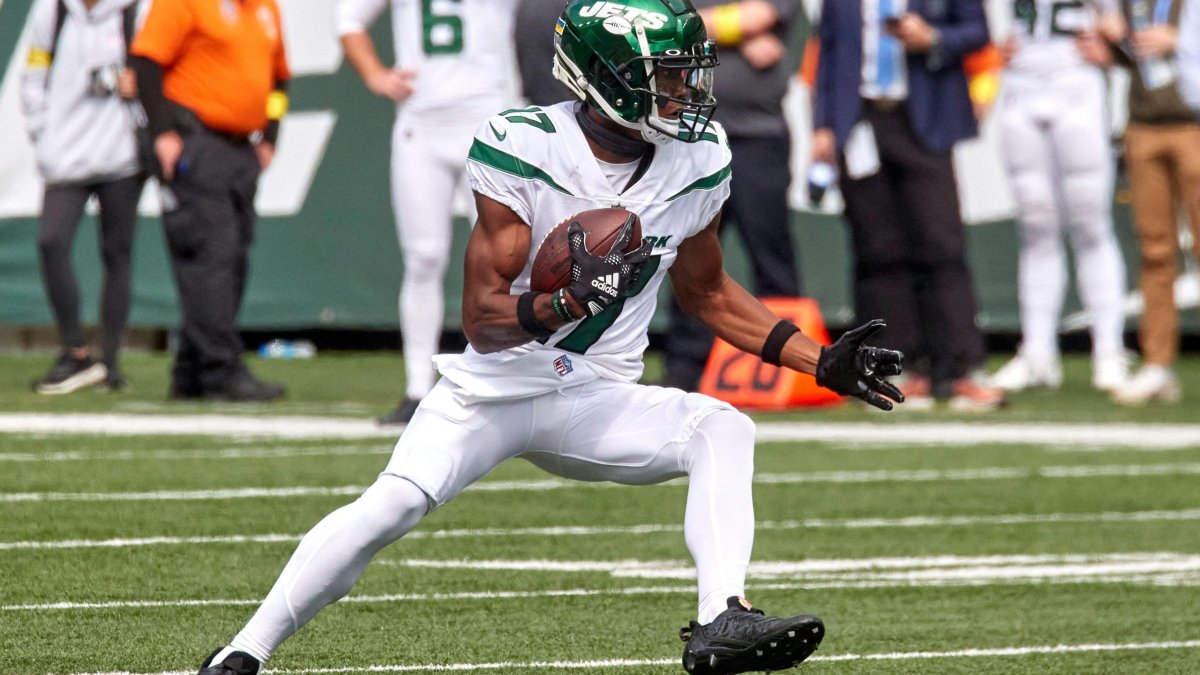• WR Garrett Wilson, New York Jets (82.7 PFF offense grade): He cleared multiple WR1 thresholds as a rookie while demonstrating elite tackle-breaking ability.
• WR Chris Olave, New Orleans Saints (82.5 PFF offense grade): He profiles as the No. 1 downfield-target-earning WR1 in 2023.
• Fantasy draft approaching? Use PFF’s AI-powered fantasy mock draft simulator to fine-tune your draft strategy and dominate your 2023 fantasy football league.
Estimated Reading Time: 6 minutes
Fantasy football managers must identify impending breakout performances in order to compile a winning roster. Second-year wide receivers are among the most consistent groups to make year-to-year production leaps. This article identifies three second-year wide receivers who are set up for a points-per-receptions (PPR) WR1 finish in 2023.
WR1s typically function as elite target earners who possess an ability to maintain high-end receiving efficiency, though negative outliers do occur annually. These outliers tend to possess at least one unique, dominant trait that shows up as a chart-topping metric.
Want to dominate your fantasy football league this year?
Check out PFF's fantasy tools below:
Fantasy Draft Kit | Fantasy Mock Draft Simulator | Live Draft Assistant
League Sync | Draft Rankings | Cheat Sheets
Tampa Bay Buccaneers wide receiver Mike Evans finished as a WR1 in both 2022 and 2021 despite falling short in multiple performance thresholds. His performances were buoyed by No. 1 rankings in 2022 average depth of target (14.2 yards), deep-target rate (24.4%) and contested-catch rate (65.4%), and top-three rankings in 2021 receiving touchdowns (12), average depth of target (14.0 yards), contested-catch rate (83.3%) and deep-target rate (28.6%).
Seattle Seahawks wide receiver Tyler Lockett (77.9 PFF offense grade) fell under three ideal 2022 thresholds but registered the group’s top-ranked catch rate (77.7%) en route to the No. 12 overall PPR finish.
Deebo Samuel (90.2 PFF 2021 offense grade) produced one 2021 negative outlier performance but put up top-two finishes in missed tackles forced receiving (23), yards per route run (2.99) and yards after the catch per reception (9.9) and tacked on 320 rush yards and seven rushing touchdowns.
The table below shows the target-earning and receiving efficiency data for 2021 and 2022 WR1s produced within the typical Weeks 1-17 fantasy football season timeline. Asterisks denote negative outlier performances. Practical minimums are shown in parentheses next to the negative outliers, and explanations for the outliers are provided below.
| Top-12 WR1 Scoring Minimums | 2022 Season | 2021 Season |
| PFF Receiving Grade | 75.6* (80.5) | 70.6* (79.4) |
| Total PPR Points | 221.9 | 235.6 |
| PPR Points/Game | 14.8 | 15.7 |
| Total Targets | 103* (123) | 103* (119) |
| Targets Per Route Run | 19.7%* (22.1%) | 17.3%* (22.1%) |
| Yards Per Route Run | 1.81* (1.96) | 1.59* (1.88) |
Note: The PPR and receiving data shown above were limited to the typical 17-week fantasy football season to reflect the ideal performance goals at hand. All data shown for the second-year players listed below includes PPR and receiving data from the full 2022-2023 NFL season unless otherwise stated. The full-season data is used to most accurately depict development.
WR Garrett Wilson, New York Jets
Garrett Wilson (82.7 PFF offense grade) proved to be an exceptionally well-rounded No. 1 X wide receiver last year despite a disappointing quarterback trio throwing him the ball. The 6-foot, 192-pounder comfortably cleared the WR1 grading and target-earning thresholds while deftly evading would-be tacklers after the catch. The latter talent functions as a safety valve in the unlikely event that his performance slips elsewhere.



 © 2024 PFF - all rights reserved.
© 2024 PFF - all rights reserved.